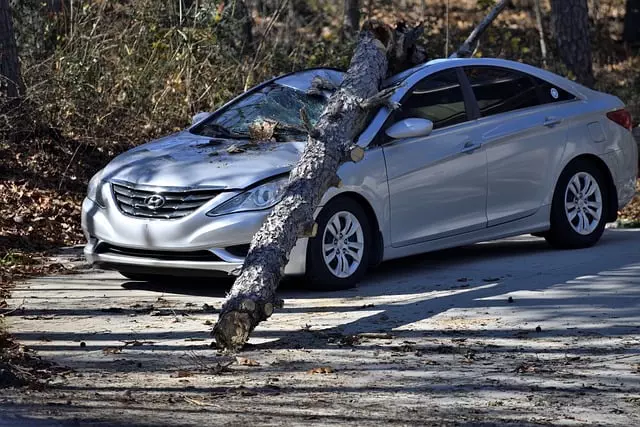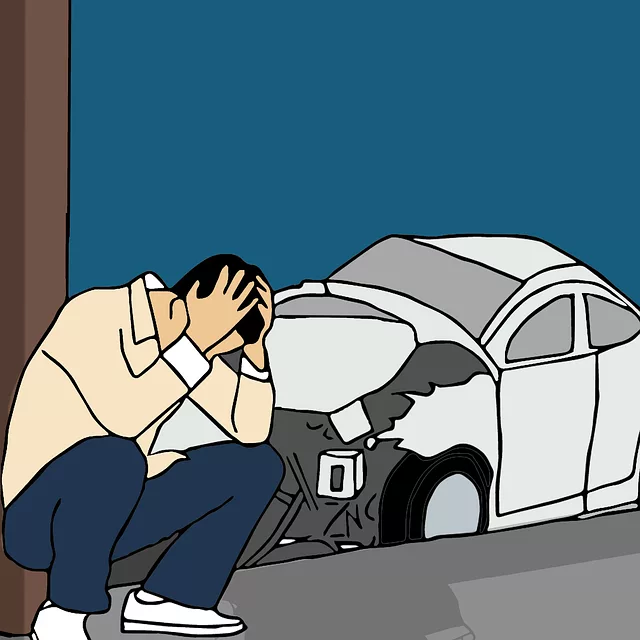Comprehensive insurance offers robust protection for vehicles beyond minimum legal requirements, covering accidents, theft, vandalism, natural disasters, and mechanical failures. It provides peace of mind by covering repair or replacement costs, ensuring drivers can confidently navigate the road. Comprehensive car protection includes financial security against diverse risks, from accidents to animal encounters. Despite exclusions like natural disasters and high-risk activities, understanding policy limitations is crucial for adequate coverage. When choosing a policy, personalize it based on vehicle age, make, model, driving history, and compare quotes for optimal alignment with budget and needs. A comprehensive guide outlines the six steps to filing a claim, emphasizing each action's importance. Avoid common pitfalls by understanding coverage and exclusions, comparing quotes from multiple providers, and embracing emerging trends in advanced driver-assistance systems, connected cars, and telematics for personalized, innovative protection.
Comprehensive car protection is an essential aspect of vehicle ownership, offering peace of mind and financial security against unforeseen events. This article delves into the intricacies of comprehensive insurance, exploring its benefits, coverages, and exclusions. From understanding what it encompasses to choosing the right policy, comparing options, and making claims, we provide a comprehensive guide. Discover how this type of protection can safeguard your investment and learn about emerging trends shaping the future of car protection.
Understanding Comprehensive Insurance: What It Covers

Comprehensive insurance is a type of auto coverage that goes beyond the standard requirements, offering protection against a wide range of potential risks. Unlike liability insurance which primarily covers damages caused to others, comprehensive insurance focuses on safeguarding your vehicle from various perils. This includes damage resulting from accidents, theft, vandalism, natural disasters, and even mechanical failures.
When you have comprehensive insurance, you can rest assured that your car is protected in the event of unforeseen circumstances. It typically covers repairs or replacement costs for your vehicle, providing peace of mind as you navigate the road ahead without worrying about unexpected expenses related to vehicle damage.
Benefits of Comprehensive Car Protection

Comprehensive car protection, often associated with comprehensive insurance, offers a robust safety net for vehicle owners. This type of coverage goes beyond the standard requirements and provides peace of mind by safeguarding against various risks and unforeseen circumstances. One of the key benefits is the financial security it offers in case of unexpected events like accidents, natural disasters, or theft. With comprehensive insurance, repairs or replacements can be covered, ensuring you’re not burdened with substantial out-of-pocket expenses.
Moreover, comprehensive protection includes coverage for damage caused by falling objects, animal encounters, and even vandalism. This broad spectrum of protection is especially valuable for drivers who frequent areas with high crime rates or face unique environmental challenges. By investing in comprehensive insurance, vehicle owners can ensure their investment is protected, providing a sense of security on the road.
Types of Damages Included in Comprehensive Insurance

Comprehensive insurance covers a wide range of damages beyond the standard perils listed in collision coverage. This includes protection against theft, vandalism, and damage from natural disasters like hail, floods, or windstorms. It also extends to accidental damage, such as when your car is hit by a falling object or damaged during parking.
Additionally, comprehensive insurance typically covers expenses related to vehicle towing, rental cars while yours is being repaired, and even loss of use if your vehicle becomes unsafe to drive due to covered damages. This type of coverage provides peace of mind, ensuring that unexpected events don’t leave you burdened with substantial repair bills or transportation costs.
Exclusions and Limitations: What's Not Covered

Comprehensive car protection, often associated with comprehensive insurance, offers a wide range of coverage for vehicle owners. However, it’s essential to understand what’s excluded from this seemingly all-encompassing shield. Despite its name, no policy can cover everything—it’s simply not feasible. Exclusions and limitations are standard across all insurance types, ensuring that policies remain affordable while providing a balanced level of protection.
These exclusions may include events like natural disasters (floods, earthquakes), acts of war or terrorism, and certain high-risk activities. For instance, comprehensive car insurance typically doesn’t cover vehicles while they’re being driven under the influence of alcohol or drugs, as this falls under criminal liability rather than vehicle damage. Additionally, some policies might exclude specific types of damage, such as regular wear and tear, poor maintenance, or intentional vandalism. Always review the policy document to understand what’s not covered by your comprehensive insurance to ensure you’re aware of any potential gaps in protection.
How to Choose the Right Comprehensive Policy for You

When selecting a comprehensive car protection policy, personal assessment is key. Start by evaluating your vehicle’s age, make, and model – older vehicles or those with higher resale values might warrant more extensive coverage. Consider your driving habits too; if you’re a careful driver with a clean record, you may find that a lower deductible suits your needs. Additionally, assess the type of comprehensive coverage offered: does it include replacement costs, rental car benefits during repairs, and legal assistance? Understanding these aspects will help tailor the policy to your specific circumstances.
Don’t forget to compare quotes from various insurers. Comprehensive Insurance policies can vary widely in terms of coverage limits and exclusions, so it’s crucial to read the fine print. Ensure you understand what’s covered and what’s not; check if the policy includes optional add-ons like protection against theft or natural disasters. Remember, the right policy should offer peace of mind while aligning with your budget and specific vehicle needs.
Comparing Policies: Key Factors to Consider

When comparing comprehensive insurance policies, several key factors come into play. First and foremost, assess the coverage limits offered by each policy. Ensure that the limits align with your vehicle’s value and your personal financial needs to avoid underinsured scenarios. Additionally, review the deductibles associated with each policy. A lower deductible means a higher out-of-pocket cost in case of a claim but can significantly reduce premium expenses over time.
Next, examine what specific perils are covered. Comprehensive insurance typically covers a wide range of events such as theft, vandalism, natural disasters, and accidental damage. However, some policies may exclude certain high-risk activities or have limitations on coverage based on geographical locations. Also, consider the reputation and financial stability of the insurance provider to guarantee claims settlement reliability. Finally, compare the additional benefits offered, like roadside assistance, rental car coverage, or discount programs that could offset higher premiums.
Making a Claim: A Step-by-Step Guide

Making a claim for comprehensive insurance is a straightforward process, but it’s important to know what steps to take to ensure a smooth experience. Here’s a step-by-step guide to help you navigate this situation.
1. Assess the Damage: First, examine your vehicle to understand the extent of the damage caused by an insurable event like theft, vandalism, or weather conditions. Take pictures of all visible damages as these will be crucial for supporting your claim.
2. Notify Your Insurance Provider: Contact your comprehensive insurance company as soon as possible after the incident. Most providers have 24/7 customer service hotlines for such emergencies. Be prepared to share details about the event, including when and where it occurred, and provide your policy number.
3. File a Claim: Follow the instructions provided by your insurer to file a claim. This usually involves filling out a form either online or over the phone. You’ll need to provide information from your policy, along with the details of the incident and any supporting documents like police reports or repair estimates.
4. Document Everything: Keep records of all communications with your insurance company, including dates and names of people you spoke to. Save receipts for any temporary repairs or transportation costs incurred while waiting for your vehicle to be fixed. These will be considered for reimbursement.
5. Wait for Assessment and Approval: Once you’ve filed your claim, your insurer will assess the damage and determine the cost of repair or replacement. They’ll then provide an approval or quote for the work. Make sure to understand the terms of your policy regarding deductibles and coverage limits.
6. Repair or Replace: With the go-ahead from your insurance provider, you can now get your vehicle repaired or replaced according to the recommended course of action. Ensure that the shop is authorized by your insurer to perform the work to avoid any complications.
Common Mistakes to Avoid When Buying Comprehensive Insurance

When purchasing comprehensive insurance, several common mistakes can lead to inadequate coverage or higher costs than necessary. One major error is failing to understand what’s covered and what’s excluded. Comprehensive insurance isn’t a one-size-fits-all policy; it varies by provider and can leave gaps in protection. Always review the policy details, paying close attention to deductibles, coverage limits, and specific exclusions for things like natural disasters or certain types of damage.
Another mistake is assuming that the cheapest option is the best. While cost is a significant factor, selecting insurance solely based on price could result in subpar service or inadequate compensation when filing a claim. Compare quotes from multiple providers, but don’t sacrifice quality and comprehensive coverage for a lower premium. Remember, the goal is to find an insurance plan that offers robust protection at a reasonable rate.
Future of Car Protection: Emerging Trends and Technologies

The future of car protection is being reshaped by emerging trends and technologies, offering drivers enhanced safety features and more comprehensive insurance options. One notable trend is the integration of advanced driver-assistance systems (ADAS), such as autonomous emergency braking and lane-keeping assist, which are becoming standard in many new vehicles. These systems use sensors and cameras to detect potential hazards, providing drivers with real-time warnings and, in some cases, taking over steering control to avoid collisions.
Additionally, the rise of connected cars and telematics is transforming vehicle protection. Through built-in data connections, these cars can transmit information about their location, speed, and driving behavior back to insurance providers. This enables insurers to offer personalized policies based on individual driving habits, potentially lowering premiums for safe drivers. As technology continues to evolve, we can expect even more innovative solutions in the realm of comprehensive insurance, making our roads safer and protection more tailored to individual needs.



